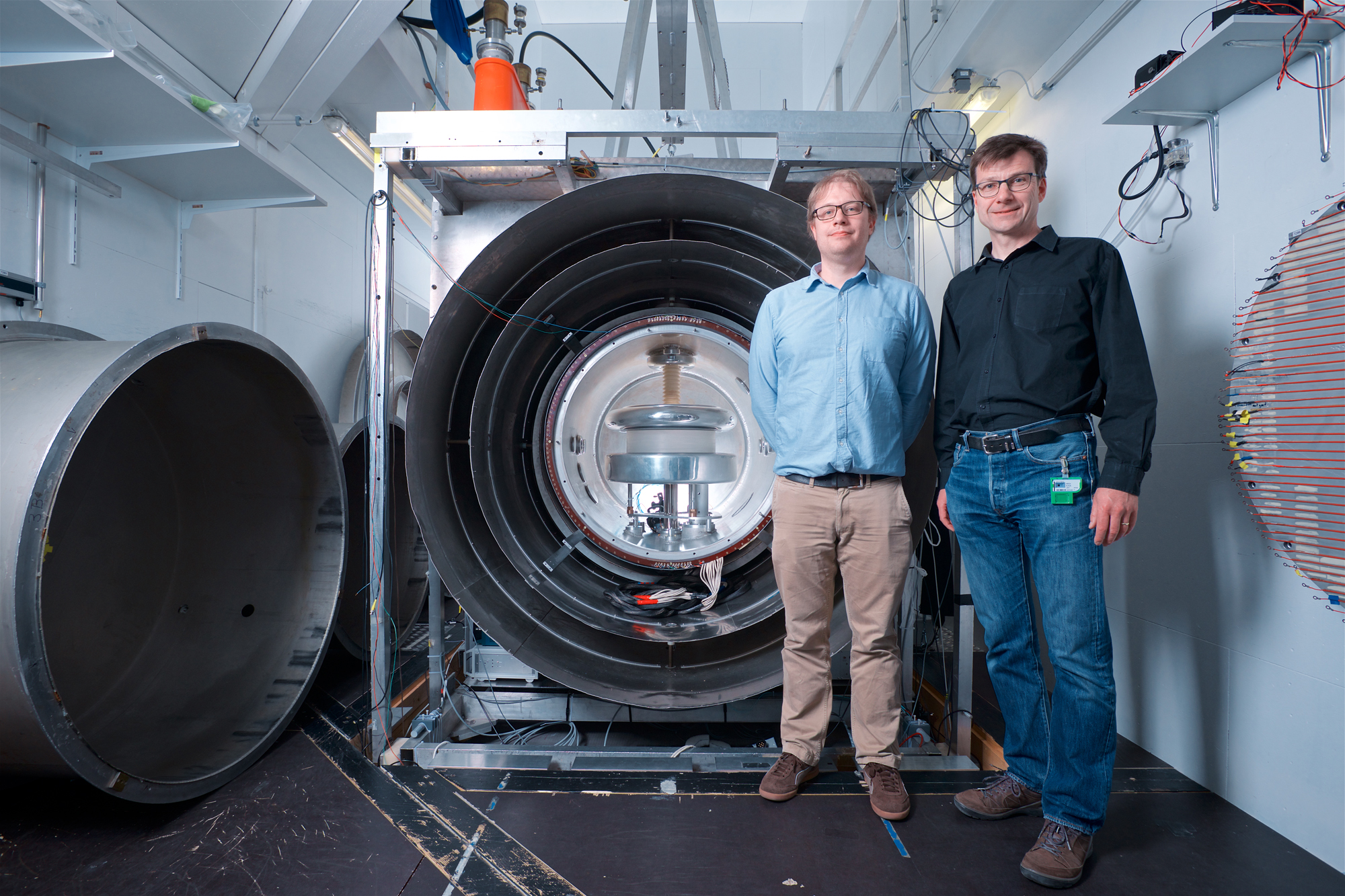Tracking down the mystery of matter
Researchers from the University of Bern, PSI, and ETH Zurich, together with international partners, have demonstrated in an elaborate experiment at PSI that the electric dipole moment of the neutron is significantly smaller than previously assumed. It has thus become less likely that the existence of matter in the universe can be explained by this dipole moment.
The Big Bang created both the matter in the universe and the antimatter – at least according to the established theory. Since the two mutually annihilate each other, however, there must have been a surplus of matter, which has remained to this day. The cause of this excess of matter is one of the great mysteries of physics and astronomy. Researchers hope to find a clue to the underlying phenomenon with the help of neutrons, the electrically neutral elementary building blocks of atomic nuclei. The assumption: If the neutron had a so-called electric dipole moment (abbreviated nEDM) with a measurable non-zero value, this could be due to the same physical principle that would also explain the excess of matter after the Big Bang.
In a new study published in Physical Review Letters, researchers from the University of Bern, Paul Scherrer Institute (PSI) in Villigen and ETH Zurich have now – in collaboration with researchers from 13 other institutions in Europe and the USA – carried out a new study to remeasure the electric dipole moment of the neutron with unprecedented precision. The University of Bern is participating in the research project with a group from the Albert Einstein Center headed by Prof. Florian Piegsa. The Bern researchers are involved in the project in a wide variety of ways – from data acquisition to hardware development.
50,000 measurements
The search for the nEDM can be expressed in everyday language as the question of whether or not the neutron is an electric compass. It has long been clear that the neutron is a magnetic compass and reacts to a magnetic field, or, in technical jargon: has a magnetic dipole moment. If in addition the neutron also had an electric dipole moment, its value would be very much less – and thus much more difficult to measure, as previous measurements have shown.
To measure the electric dipole moment of the neutron with unprecedented precision, the researchers used the source of ultracold neutrons at PSI, which supplies neutrons at a comparatively slow speed. Over a period of two years, every 300 seconds, an 8 second long bundle with over 10,000 neutrons was directed to the experiment and examined. The researchers measured a total of 50,000 such bundles until they had a sufficiently large number of observed neutrons.
The measurements required some effort to keep the local magnetic field constant. For example, trucks passing by on the highway next to the PSI disturbed the magnetic field to an extent relevant to this experiment and therefore had to be deducted from the experimental data as an interfering signal. This was a rather extensive study, even for PSI with its large-scale research facilities. But that is exactly what is needed today if you are looking for so-called new physics beyond the Standard Model.
Even more precise measurements are planned
Similar to previous studies, the researchers could not determine a non-zero value for the nEDM. "Our current result too yielded a value for nEDM that is too small to measure with the instruments that have been used up to now – the value is too close to zero", says Philipp Schmidt-Wellenburg, a researcher on the nEDM project on the part of PSI. It has therefore become less likely that the neutron will help explain the excess of matter. But it still can't be completely ruled out. Therefore, the next, more precise measurement is already being planned. The researchers expect to start the next series of measurements of the nEDM by 2021.
In the follow-up experiment "n2EDM", the Bern group around Florian Piegsa is responsible for the core – the neutron precession chamber and the high voltage facility. "Our goal is to surpass the accuracy of the current results again with the series of measurements at the new experiment," says Florian Piegsa.
Sources: Paul Scherrer Institut / ETH Zurich
Publication details:C. Abel et al.: Measurement of the permanent electric dipole moment of the neutron. Physical Review Letters XY. Februar 2020 (online). DOI: |
2020/02/28


